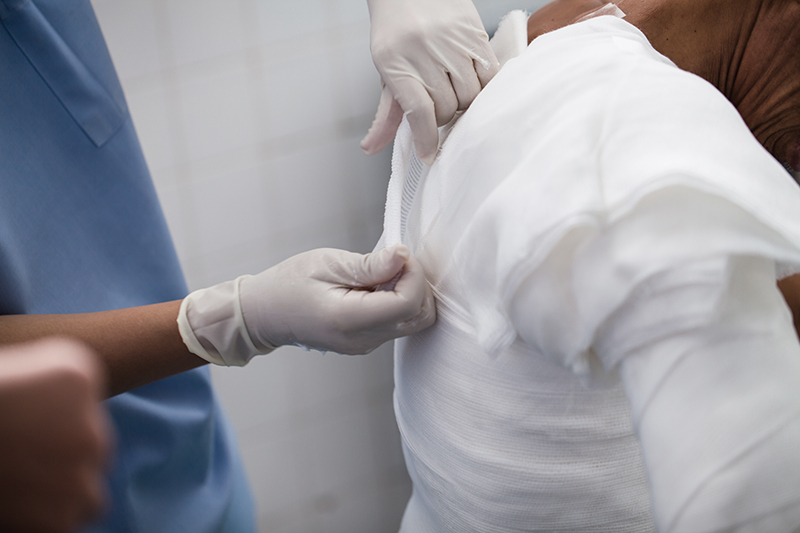- Assess the overall condition of burn wounds after extinguishing the heat
- Conduct a physical examination to identify injuries to different organs and plan treatment in areas that are severe and require urgent care first
- Consider and inquire about the history of the injury, including how the wound occurred and the location of the accident
- Examine the patient’s burn wounds throughout the body
- Assess the depth and size of the patient’s wounds
- Determine the treatment method, which will vary according to the patient’s severity. In less severe cases, outpatient treatment can be provided, including:
- Cleanse the wound using innovative wound cleaning technology with a water pressure device (Versajet)
- Apply topical antibiotics
- If the wound does not heal within 3 weeks or is large, skin grafts may be used
- In cases of severe injuries, hospitalization is required, including:
- Care for the general condition, loss of fluids, electrolytes, and protein
- Prevent infection
- Cleanse the wound
- Remove necrotic tissue that is the source of infection and clean it, as necrotic tissue obstructs blood flow. Removing dead tissue will help make the environment suitable for wound healing and stimulate the formation of new tissue. The removal of necrotic tissue should wait for about 3 – 5 days for it to separate from healthy tissue
***Limitations for debridement: No more than 40% of the body can be debrided in one day. Generally, surgeons will debride no more than 20% per day to prevent excessive blood loss. It is important to complete surgery in no more than 1 hour because prolonged surgery may lead to patient death.
- Prevent complications such as Compartment Syndrome
- Enhance the patient’s immunity
- Repair by using skin grafts to cover damaged skin as quickly as possible
- Use aseptic techniques in wound care
- In cases of severe and dangerous injuries, the patient must be kept in a separate room with suitable temperature and ventilation
- Administer antibiotics in cases where the wound is infected, presenting symptoms, including Topical Antibacterial Agents
- Perform an electrocardiogram (EKG) in cases where the patient has electrical injuries

Since the problem of burn wounds can occur in daily life, significantly affecting both the body and mind, Bangkok Hospital prioritizes this by establishing a Burn Unit to care for patients injured by heat and varying degrees of burns. With a holistic approach by a team of experienced interdisciplinary medical professionals and internationally recognized wound care techniques, patients can return to a good quality of life again.
